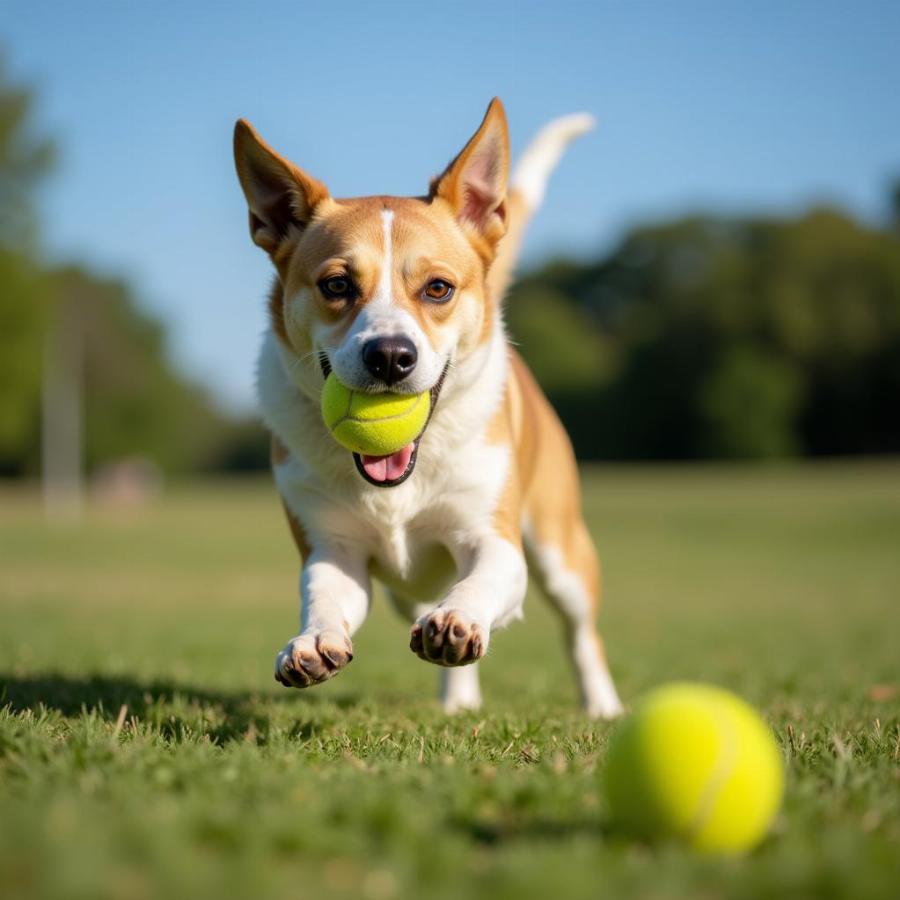Have you ever wondered what the world looks like through your dog’s eyes? It’s not just black and white, as the old myth suggests. Dogs do see color, just not in the same vibrant spectrum that we do. They experience the world through a unique “dog sight filter.” This article delves into the fascinating world of canine vision, explaining how dogs perceive colors, shapes, and movement.
Deciphering the Dog Sight Filter: How is it Different?
The “dog sight filter” is essentially a simplified way of understanding how a dog’s vision differs from ours. While humans have three types of color-detecting cells called cones in our eyes, dogs only have two. This difference means dogs see fewer colors, similar to humans with red-green colorblindness.
What Colors Do Dogs See with their Unique Filter?
Imagine a world painted primarily in shades of blue, yellow, and gray. That’s pretty close to what dogs see! Their limited color vision means they perceive reds, oranges, and greens as variations of yellow and brown.
For example, a bright red fire hydrant might appear dull brown to a dog, while a lush green lawn might look more like a field of pale yellow.
Beyond Colors: Other Aspects of the Dog Sight Filter
The “dog sight filter” isn’t just about color perception. Dogs also have:
- Superior Night Vision: Dogs have more light-sensitive cells called rods in their eyes, allowing them to see better in low-light conditions than humans.
- Wider Field of View: A dog’s eye placement gives them a wider field of view, perfect for detecting movement in their peripheral vision.
- Motion Sensitivity: Dogs excel at detecting even the slightest movements, which explains their impressive hunting and retrieving skills.
 Dog Playing Fetch in the Park
Dog Playing Fetch in the Park
Living with a Dog’s Unique Visual Perspective
Understanding the “dog sight filter” can help you better interact with your furry friend.
- Choose Toys Wisely: Opt for toys in shades of blue or yellow that stand out more vividly to your dog’s eyes.
- Train with Clarity: Use clear hand signals and body language when training, as these visual cues are more easily interpreted by your dog.
- Provide a Safe Environment: Be mindful of potential hazards in your dog’s environment, especially at night, as their vision might not detect obstacles as clearly as yours.
FAQs About Dog Vision
Do dogs see in black and white?
No, dogs are not colorblind. They see some colors, primarily blues, yellows, and grays.
Why do dogs have better night vision than humans?
Dogs have a higher concentration of rods in their eyes, specialized cells that detect light and movement in low-light conditions.
Does my dog’s breed affect its vision?
Yes, certain breeds, like Brachycephalic dogs (those with short noses), may have some degree of impaired vision due to the shape of their skulls and eye placement.
“Regular eye checkups are crucial for maintaining your dog’s eye health. Early detection of any vision problems can lead to more effective treatment,” says Dr. Emily Carter, a certified veterinary ophthalmologist.
Want to Learn More About Your Dog?
Discover more insightful articles on dog health, care, and training right here on Beaut Dogs. When you need expert advice and reliable information about your canine companion, Beaut Dogs is your go-to resource. For personalized support, reach out to us at [email protected].
Beaut Dogs is a comprehensive online platform dedicated to providing dog lovers with accurate and valuable information on all aspects of dog ownership. From breed-specific insights to expert advice on care, nutrition, and training, we’re here to help you navigate the joys and responsibilities of being a dog parent. Visit https://beautdogs.com today and explore a world of knowledge about your furry friend!